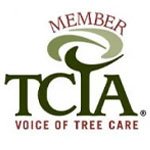There can be many benefits to properly pruning your trees. These benefits include increased strength, a less likelihood of large failures, improving inner canopy and secondary growth, as well as controlling the shape while decreasing the interference with structures and utilities. Before you prune your trees you should have a specific objective defined that guides your decision making on how and when to prune your trees. With many different achievable goals with proper pruning and planning, the first question should be “how often should I be pruning to achieve my goals?”. Many factors affect the answer of pruning timing and pruning amount. These factors include the tree species, the trees health, the age of the tree, the trees location or proximity to structures on the property, fruit production, your requirements for aesthetics, and the amount of risk you are willing to accept.
The general rule for the amount of a tree or branch that can be pruned during one growing season is 25% at a time, although this can vary among different tree species. Some species of trees, especially fruit bearing trees have been selectively bred for thousands of years so they are able to accept a large percentage of pruning at a time with very little negative consequence. These trees also generally do not get as large as most tree species. The smaller size means that there is less weight and other forces (like wind) affecting the tree’s likelihood of failure. Most trees that produce desirable fruit need to be trimmed often due to the trees natural tendency to want to produce more leaves and energy. The biological chemical levels in these trees need to be controlled so that they do not inhibit the growth of the secondary fruit producing buds of the trees. The trees also need to be able to hold the great additional weight of the fruit produced without breaking. Fruit producing trees often require heavy annual pruning in order to get the maximum amount of fruit production.
Other problems that can develop are large water sprouts, normally they can develop with relatively little harm to the tree or its surroundings. However this does show a difference in pruning a large maple tree as harshly as a fruit tree will force the maple tree to grow very large water sprouts that are attached to weak heavily decayed wood that are very likely to break off and fall through roofs or crush cars parked in your driveway. Oftentimes tree species that grow slower or species that are larger in size require much more planning and detail in order to achieve specific goals. A disease resistant tree or a tree that seals wounds quicker can usually have larger cuts made than a slow growing or tree that easily is affected by decay fungi.
The health and vigor of a tree is always important to consider when pruning. Young vigorous trees can be pruned every year to achieve various goals and improve the desired structure. These trees are small and the diameter of the parent branch the cut was made to is increasing in diameter faster allowing wounds to be sealed without causing long term issues. To these trees pruning to improve structure is most important to setting up the tree for future success. Old or unhealthy trees take more care. These trees should be trimmed less than the general rule of 25% at a time, and the pruning should be spread out as long as possible to allow the tree to maintain as much canopy as possible. The pruning on old or unhealthy trees may need to be completed over multiple pruning sessions and multiple years in order to be able to achieve your goals. Cuts should be smaller in size relative to the parent branch, many times trimming back only the tips of limbs for the first or maybe even the second pruning session is needed in order to promote inner and secondary growth. This is to avoid making one large cut that could lead to the tree becoming unsafe with decay creating a large failure, or forcing the tree to be removed.
Where the tree is located can also greatly affect how often it must be pruned. Trees close to structures often require pruning every one to three years to prevent the tree coming in contact with structures or utilities. While a tree in a backyard with nothing around it may only need to be pruned every seven to ten years to clean out large deadwood and lightly adjust the tree’s structure. How often a tree should be cleaned for dead wood depends greatly on the tree’s location. Trees growing over parked cars or children’s playgrounds need smaller dead branches removed more often, than trees that dropped branches that only need to be picked up before mowing.
If your goal is to keep trees in a specific shape or they need to be kept at a specific size then you will oftentimes need to prune these trees every year or two in order to keep them this way. If you skip a few years the trees may never fully recover after a heavy pruning that brings them back into order. Although some trees will require time consuming restoration pruning after such a heavy pruning, this can bring them almost back to their original potential after a few years. However other trees may not ever recover and may succumb to the damaging effects of over pruning after missing a few years.
Proper pruning cycles can be very important to many trees depending on the circumstances. If you have a tree or trees that you are unsure about it is always best to consult an ISA Certified Arborist. They are trained in maintaining individual trees and will be able to give you proper advice on how you can best achieve your desired goals. They can also educate you on how the different pruning cycles and techniques will affect your trees as they continue to grow. To schedule a free estimate to have tree work performed or receive a paid evaluation by ISA Certified Arborist call J.M. Tree Service at 585-766-5674. J.M. Tree Service has multiple ISA Certified Arborist on staff to help you with all your tree care needs.









